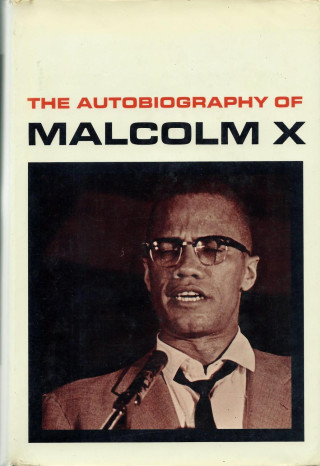What was Malcolm’s vision for the book?
From the outset, Malcolm wanted to showcase the transformative power of the teachings of the Nation of Islam. The book was to be dedicated to Elijah Muhammad and the royalties would go the organization.
He envisioned the book as a collection of speech-like essays on race relations in America and solutions for black Americans, rooted in NOI teachings. It would be prefaced by three chapters, including one introducing Malcolm X and one introducing Elijah Muhammad. It really didn’t start out as an autobiography at all.
But that conflicted with Haley’s vision, right?
Right. This was the beginning of the tension between them over the book. Malcolm wanted to offer analysis of the community’s politics. Haley wanted to tell a story.
Haley wrote in the book’s epilogue about how hard it was to get Malcolm to talk about himself, how he kept pivoting to sociological analysis. You can see it in the handwritten notes he put in the margins of the manuscript—things like, “Stop speechifying” and “Show, don’t tell” and “Isn’t there a better way to get this across?” He really pushed Malcolm to ground his message in a narrative. Malcolm’s notes, meanwhile, are mostly factual corrections.
The turning point came when Haley asked Malcolm about his mother, Louise Little. She had suffered a breakdown after his father’s death and was institutionalized, and Malcolm had not seen her for 20-some years. Asking Malcolm about his mother really opened him up to relating his family story, which formed the core of what Haley wanted to tell.
So ultimately Haley got his way?
As they worked together, the project changed. The personal narrative grew and the number of essays shrunk. Instead of three introductory chapters to a series of essays, the book became multiple chapters with three essays.
Where does the rediscovered chapter fit in?
Well ultimately, it didn’t, right? This is a remnant of what the old book was to be. If Alex Haley thought Malcolm was speechifying too much, “The Negro” is Malcolm straight-up doing just that—about the conditions that beset black people in America.
Was there any significance to the title?
For many of us familiar with the terminology of the 1950s and 60s, the word “negro” sounds unremarkable. But for Malcolm, coming out of the Nation of Islam’s teachings, the word meant something very specific. There was a folk etymology by which Malcolm connected “negro” to “necro,” meaning dead. In the NOI, the way they understood their process of reform, they called it the resurrection of the dead. For them, the so-called “negro In America” needed to be resurrected.
For Malcom to use that word, it was a very specific invocation—that this was a chapter about the dead. Which places the writing of this to 1963, while he is still in the NOI—before he broke with them in 1964 and the relationship devolved into a toxic, violent one that ended in his assassination.
What was the thesis of ‘The Negro’ chapter?
It had several parts, but at its core it was an intense rebuke of black America. The first part is Malcolm’s diagnosis of this “sickness” whereby the “negro” has allowed himself to be destroyed by white America:
“The black man here in America, in every way he can be looked at and examined, is in a pitiful state of sickness. Sick economically. Politically. Mentally. Socially. Spiritually… Here is this sick, Christianity-duped, white man-duped, brainwashed race today, sittin-in and kneeling-in at the bottom of the ladder, looking up and hollering, ‘I’m just as good as you’ at the second and third and fourth-generation immigrants who are now the first-class citizens, and the aristocrats, of this so-called ‘melting pot’ country.”

